- europages
- >
- COMPANIES - SUPPLIERS - SERVICE PROVIDERS
- >
- steel and alloys
Results for
Steel and alloys - Import export

AMETEK SPECIALTY METAL PRODUCTS
United States
21Cr-6Ni-9Mn is a high manganese nitrogen strengthened, austenitic stainless steel. It combines high strength in the annealed condition, excellent resistance to oxidation at high temperatures as well as good resistance to lead oxide and a high level of corrosion resistance at ambient temperatures. The alloy can be fabricated and formed much the same as type 304 and 316, and is readily wieldable. It remains nonmagnetic after severe cold work. Please note that we have a minimum order value of £10,000.
Request for a quote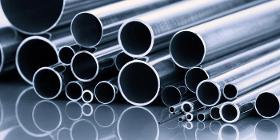
AMETEK SPECIALTY METAL PRODUCTS
United States
6 Mo (UNS S31254) is a super austenitic stainless steel with a high level of molybdenum and nitrogen, providing high resistance to pitting and crevice corrosion as well as high strength compared with conventional austenitic stainless steels such as 316L. The alloy can provide excellent resistance to stress corrosion cracking allowing tube cold formingand may be used without the necessity to re-anneal at testing up to 120°C. Please note that we have a minimum order value of £10,000.
Request for a quote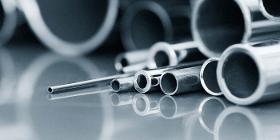
AMETEK SPECIALTY METAL PRODUCTS
United States
316Ti (UNS S31635) is a titanium stabilised version of 316 molybdenum-bearing austenitic stainless steel. The 316 alloys are more resistant to general corrosion and pitting/crevice corrosion than the conventional chromium-nickel austenitic stainless steels such as 304. They also offer higher creep, stress-rupture and tensile strength at elevated temperature. High carbon Alloy 316 stainless steel can be susceptible to sensitisation, the formation of grain boundary chromium carbides at temperatures between approximately 900 and 1500°F (425 to 815°C) which can result in intergranular corrosion. Resistance to sensitisation is achieved in Alloy 316Ti with titanium additions to stabilise the structure against chromium carbide precipitation, which is the source of sensitisation. This stabilisation is achieved by an intermediate temperature heat treatment, during which the titanium reacts with carbon to form titanium carbides. Please note that we have a minimum order value of £10,000.
Request for a quote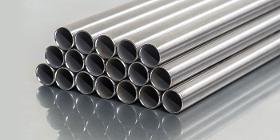
AMETEK SPECIALTY METAL PRODUCTS
United States
Grade 316 is the standard molybdenum-bearing grade, second in overall volume production to 304 amongst the austenitic stainless steels. The molybdenum gives 316 better overall corrosion resistant properties than Grade 304, particularly higher resistance to pitting and crevice corrosion in chloride environments. Grade 316L, the low carbon version of 316 and has very high immunity from sensitization (grain boundary carbide precipitation). It is extensively used in the oil and gas and chemical industries for its cost effective corrosion resistance and ease of fabrication. There is commonly no appreciable price difference between 316 and 316L stainless steel. The austenitic structure also gives these grades excellent toughness, even down to cryogenic temperatures. Compared to chromium-nickel austenitic stainless steels, 316L stainless steel offers higher creep, stress to rupture and tensile strength at elevated temperatures. Please note that we have a minimum order value of £10,000.
Request for a quote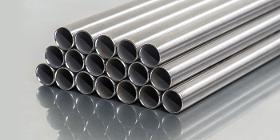
AMETEK SPECIALTY METAL PRODUCTS
United States
Alloys 304 (S30400) and 304L (S30403) stainless steels are variations of the 18 percent chromium – 8 percent nickel austenitic alloy, the most familiar and most frequently used alloy in the stainless steel family. High strength, excellent corrosion resistance and minimized carbon content make Alloy 304 and 304L Stainless Steels useful for applications where welding is required. Uses include architectural mouldings and trim, welded components of chemical, textile, paper, pharmaceutical and chemical industry processing equipment. Other advantages are its resistance to oxidation, excellent formability, ease of fabrication and cleaning, excellent strength to weight ratio and good toughness at cryogenic temperatures. Please note that we have a minimum order value of £10,000.
Request for a quote
AMETEK SPECIALTY METAL PRODUCTS
United States
Alloy 209 is a fully austenitic nitrogen strengthened stainless steel, having twice the yield strength and superior corrosion resistance at room temperature when compared to 316/316L or 317/317L stainless steels. This grade does not become magnetic when cooled to sub-zero temperatures or to a cold working process and has high resistance to sulphide stress corrosion cracking in both annealed and cold worked/ cold worked & aged form up to 30 HRc hardness. Please note that we have a minimum order value of £10,000.
Request for a quote
AMETEK SPECIALTY METAL PRODUCTS
United States
UNS NO8904, commonly known as 904L, is a low carbon high alloy austenitic stainless steel which is widely used in applications where the corrosion properties of AISI 316L and AISI 317L are not adequate. The addition of copper to this grade gives it corrosion resistant properties superior to the conventional chrome nickel stainless steels, in particular to sulphuric, phosphoric and acetic acids. However, there is limited use with hydrochloric acids. It also has a high resistance to pitting in chloride solutions, a high resistance to both crevice and stress corrosion cracking. Alloy 904L performs better than other austenitic stainless steels due to the higher alloying of nickel and molybdenum. The grade is non-magnetic in all conditions and has excellent formability and weldability. The austenitic structure also gives this grade excellent toughness, even down to cryogenic temperatures. Please note that we have a minimum order value of £10,000.
Request for a quote
AMETEK SPECIALTY METAL PRODUCTS
United States
316LN (UNS S31653) is a low-carbon, nitrogen-enhanced version of Type 316 molybdenum-bearing austenitic stainless steel. The Type 316 alloys are more resistant to general corrosion and pitting/crevice corrosion than the conventional chromium-nickel austenitic stainless steels such as Type 304. They also offer higher creep, stress-rupture and tensile strength at elevated temperature. The nitrogen in Type 316LN adds additional resistance to sensitization in some circumstances. The nitrogen content of Type 316LN stainless steel also provides some solid solution hardening, raising its minimum specified yield strength compared to Type 316L stainless steel. Like Types 316 and 316L, the Type 316LN alloy also offers good resistance to general corrosion and pitting/crevice corrosion. Please note that we have a minimum order value of £10,000.
Request for a quote
AMETEK SPECIALTY METAL PRODUCTS
United States
Grade 316 is the standard molybdenum-bearing grade, second inoverall volume production to 304 amongst the austenitic stainless steels. The molybdenum gives 316 better overall corrosion resistant properties than Grade 304, particularly higher resistance to pitting and crevice corrosion in chloride environments. Grade 316L, the low carbon version of 316 and has very high immunity from sensitization (grain boundary carbide precipitation). It is extensivly used in the oil and gas and chemical industries for its cost effective corrosion resistance and ease of fabrication. There is commonly no appreciable price difference between 316 and 316L stainless steel. The austenitic structure also gives these grades excellent toughness, even down to cryogenic temperatures. Compared to chromium-nickel austenitic stainless steels, 316L stainless steel offers higher creep, stress to rupture and tensile strength at elevated temperatures. Please note that we have a minimum order value of £10,000.
Request for a quote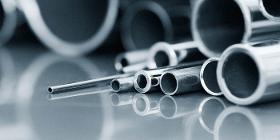
AMETEK SPECIALTY METAL PRODUCTS
United States
Alloys 304 (S30400) and 304L (S30403) stainless steels are variations of the 18 percent chromium – 8 percent nickel austenitic alloy, the most familiar and most frequently used alloy in the stainless steel family. High strength, excellent corrosion resistance and minimized carbon content make Alloy 304 and 304L Stainless Steels useful for applications where welding is required. Uses include architectural mouldings and trim, welded components of chemical, textile, paper, pharmaceutical and chemical industry processing equipment. Other advantages are its resistance to oxidation, excellent formability, ease of fabrication and cleaning, excellent strength to weight ratio and good toughness at cryogenic temperatures. For severely corrosive environments,the lower content of Type 304L is preferred because of its greater immunity to intergranular corrosion. Please note that we have a minimum order value of £10,000.
Request for a quote
AMETEK SPECIALTY METAL PRODUCTS
United States
347 (UNS S34700/1.4550) is a fully austenitic niobium stabilised stainless steel. The addition of Niobium reduces the creation of carbide precipitation in service between 430 to 900 degrees C and during welding processes and increases the mechanical strength of the material. This grade has good resistance to oxidation and corrosion along with good creep strength and can be used at temperatures where carbide precipitation may occur in non-stabilised grades e.g., 304. It is used principally in aerospace exhaust manifolds and engine components, chemical processing equipment running at high temperatures and in nuclear processing piping. Please note that we have a minimum order value of £10,000.
Request for a quote
AMETEK SPECIALTY METAL PRODUCTS
United States
S20910 stainless steel provides a combination of good corrosion resistance and strength not found in any other commercial material available in its price range. This austenitic stainless steel has corrosion resistance greater than that provided by types 316 and 316L, plus approximately twice the yield strength at room temperature in the annealed condition. In addition S20910 stainless steel has very good mechanical properties at both elevated and sub-zero temperatures a well as outstanding cryogenic properties. And, unlike many austenitic stainless steels, 22-13-5 stainless steel can be heavily cold worked to enhance its yield strength and remain non-magnetic. Please note that we have a minimum order value of £10,000.
Request for a quote
AMETEK SPECIALTY METAL PRODUCTS
United States
Stainless steel is an iron alloy, containing a minimum of 10.5% chromium. It is often combined with other alloying elements such as nickel, nitrogen, and molybdenum to create the corrosion-resistant product used in many applications. Hamilton Precision Metals offers a diverse range of 300 and 400 series stainless steels.
Request for a quote
AMETEK SPECIALTY METAL PRODUCTS
United States
Stainless steel powder 434L is a low-carbon ferritic steel powder, in mildly corrosive environments or atmospheric exposures, have corrosion resistance approaching that of some nickel stainless steels. These alloys are oxidation resistant at elevated temperatures. Type 434 stainless steel alloys are ductile and do not work-harden readily. The toughness, defined as resistance to crack propagation or notch strength, of ferritic steels is relatively low, and the ductile-to-brittle transition temperature is at or above room temperature. The corrosion and oxidation resistances of the ferritic steels are directly related to their chromium content. The 17% Cr 434 steel alloys have good corrosion resistance to atmospheric conditions. These alloys are used in a variety of applications where corrosion resistance is more important than strength.
Request for a quote
AMETEK SPECIALTY METAL PRODUCTS
United States
Stainless steel powder 430L is a Low-carbon ferritic stainless steels, in mildly corrosive environments or atmospheric exposures, have corrosion resistance approaching that of some nickel stainless steels. These alloys are oxidation resistant at elevated temperatures. Type 430 alloys are ductile and do not work-harden readily. The toughness—defined as resistance to crack propagation or notch strength—of ferritic steels is relatively low, and the ductile-to-brittle transition temperature is at or above room temperature. The corrosion and oxidation resistances of the ferritic steels are directly related to their chromium content. The 17% Cr 430 steel alloys have good corrosion resistance to atmospheric conditions. 430 stainless steel alloys are used in a variety of applications where corrosion resistance is more important than strength. These alloys are resistant to attack in a wide variety of corrosion media.
Request for a quote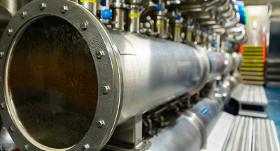
AMETEK SPECIALTY METAL PRODUCTS
United States
Our roll bonded clad plate products are engineered for demanding ASME pressure vessel, steam boiler and autoclave applications where high corrosion resistance, pressure resistance and structural performance are critical. Using proven roll bonded technology and corrosion resistant alloys, our high strength clad plate is manufactured to exacting pressure vessel specifications and certified to ASTM A263, A264 or A265 for pressure vessel fabrication. Corrosion Resistant Alloys We specialize in processing high corrosion resistant alloys and BPVC rated materials for stainless steel pressure vessel manufacturers. Other alloys include: Stainless Steels Nickel and Nickel Alloys Inconel®, Monel®, Hastelloy® Aluminum Carbon steel Titanium Other alloys available upon request
Request for a quote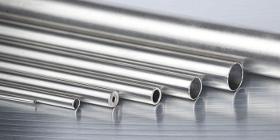
AMETEK SPECIALTY METAL PRODUCTS
United States
Because of its strength, unique density and corrosion resistance, titanium has found applications in many industries. For high quality tubing products, it’s often a better substance to use than competing materials like stainless steels or super alloys. Titanium tubes are light weight and exceptionally corrosion and heat resistantThe density of titanium is about 60 per cent of that of steel- or nickel-based alloys giving significant weight savings in aerospace structures. The tensile strength is better than that of austenitic or ferritic stainless steels. Titanium is exceptionally corrosion resistant and exceeds the resistance of stainless steels in most environments. The metal is non-magnetic too, and has good heat transfer properties, with a melting point higher than steel alloys. Titanium is easily worked. Please note that we have a minimum order value of £10,000.
Request for a quoteDo you sell or make similar products?
Sign up to europages and have your products listed
Results for
Steel and alloys - Import exportNumber of results
17 ProductsCountries
Company type